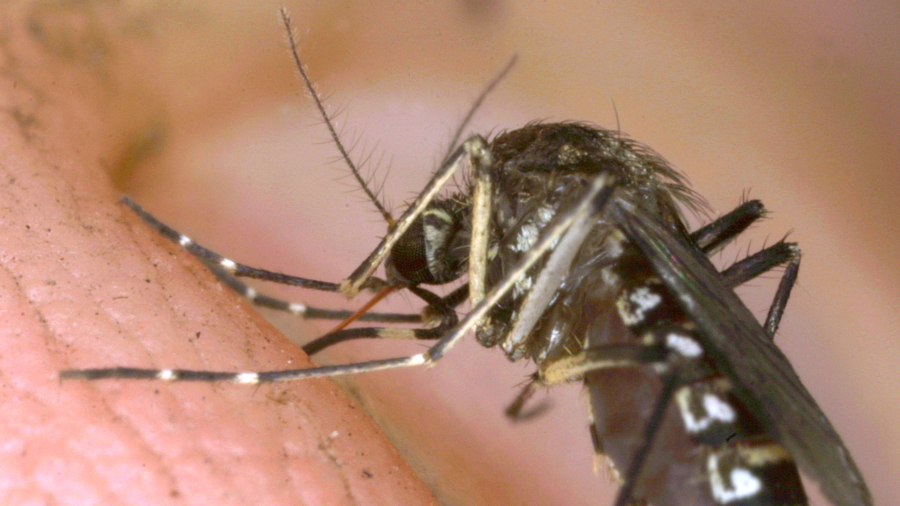New research has discovered that disease-carrying Aedes aegypti mosquitoes can use their senses, including the ability to detect infrared radiation (IR), to enhance their ability to find hosts.
The research, conducted by a team at the University of California in Santa Barbara (UCSB), also found that this newly identified sense largely increases the insects’ host-seeking behavior when combined with other cues like CO2 and human odor.
According to the study “Thermal Infrared Directs Host-Seeking Behavior in Aedes Aegypti Mosquitoes,” published in Nature, the mosquitoes use specific proteins to sense IR. This has shed some light on how they locate their human hosts and offered new ways to control mosquito-borne diseases.
The research showed that this ability is particularly notable in the Aedes aegypti species, which is also responsible for tens of millions of cases of widespread disease globally, including dengue, yellow fever, and Zika.
The other mosquito species, Anopheles gambiae, spreads malaria, which, according to the World Health Organization (WHO), causes nearly half a million deaths each year globally.
The risk of infection stems from female mosquitoes, which require blood for egg development, while male mosquitoes pose no risk of infection.
IR Combined With Other Factors
Over several decades of research, scientists have discovered that mosquitoes don’t rely on a single cue to detect their hosts but rather a combination of cues. For example, their ability to use IR senses was doubled when combined with CO2 emitted from human breathing, as well as human odor.
The research has shown that the insects’ ability is impaired when relying solely on detecting their hosts via exhaled breath, humidity and odor, as strong wind or rapid movement of the respective hosts can limit these abilities, due to the insects’ poor vision.
The UCSB study has shown how researchers discovered this infrared detector and its location and functionality.
While the insects can generally sense heat rising from human skin from a distance of around 10 cm (4 inches), via their IR senses this can be enhanced to around 2.5 feet. The researchers also found that IRs sense alone, when not combined with the other cues, has no impact.
While previous studies showed little to no effect of thermal infrared on mosquito behavior, Craig Montell, senior author of the study, attributed this to the methodology of the studies, which likely didn’t take factors such as CO2 and odor cues into consideration.
Heat-Sensing Proteins
The study further showed that other factors must be at play for the mosquitoes to be able to pick up the IR energy emitted by human bodies, as the energy itself is too low to be detected by the proteins present in the insects, which would need to be activated for this to be facilitated.
“As the peak wavelength of the IR radiating from humans is far lower in energy than the longest wavelengths that mosquito rhodopsins can detect, IR is unlikely to directly activate a receptor through stimulation by photons,” according to the study.
“An alternative explanation is that IR-sensitive structures in the mosquito undergo radiant heating, in turn activating a thermosensory receptor.”
The authors found that the tips of a mosquito’s antennae have heat-sensing neurons containing a heat-sensing protein known as TRPA1. This protein is also a sensor of warm temperatures and functions in avoiding noxious temperatures in multiple types of fruit flies. The team discovered that removing these tips eliminated the mosquitoes’ ability to detect IR.
The authors found that this protein effectively acts as a temperature sensor that allows the insects to detect the emitted radiation, which greatly enhances their ability to locate the hosts.
This, however, did not fully explain the range at which mosquitoes were able to detect their hosts.
Further investigation, however, led them to conclude that two of the 10 rhodopsin proteins found in mosquitoes are expressed in the same antennal neurons as the TRPA1. These proteins allow for a wider range at which the insects can detect their hosts.
“In the comfortable range, TRPA1 is not the direct temperature sensor. Rather, to sense comfortable temperatures, several opsins are also required for thermosensation, and they initiate a signalling cascade that culminates in the activation of TRPA1,” as explained in the study.
According to the National Library of Medicine, rhodopsin is a “visual pigment found in the rod photoreceptor cells of the retina, is responsible for converting photons into chemical signals that stimulate biological processes in the nervous systems of humans and other vertebrate animals, allowing them to sense light.”
The scientists then conducted tests by which they disabled the TRPA1 receptors, which effectively eliminated the insects’ sensitivity to IR. However, when disabling either or both of the rhodopsin receptors, it did weaken the sense but did not entirely eliminate it.
This led them to conclude that both rhodopsin receptors have the ability to trigger the TRPA1 receptors, which in turn enhances the insects’ ability to sense the range of the mosquito’s IR sensor to around 2.5 feet.
The discovery also likely explains why loose-fitting clothing is beneficial for preventing mosquito bites. On the one hand, this type of clothing allows for more room between clothing and skin, effectively preventing the mosquito from reaching the skin. The other reason is that loose-fitting clothing allows the IR to dissipate between our skin and the clothing, thus eliminating the mosquitoes’ ability to detect it.
The team’s discovery could pave a way for a tactical advantage in combating mosquito-borne diseases by improving methods for suppressing mosquito populations. This could be done by enhancing the efficacy of mosquito traps by incorporating thermal IR from sources around skin temperature.

